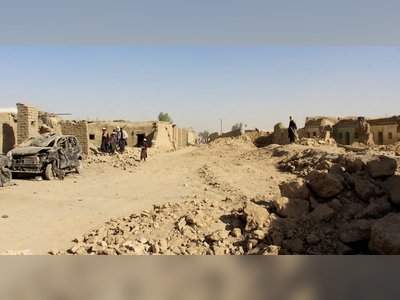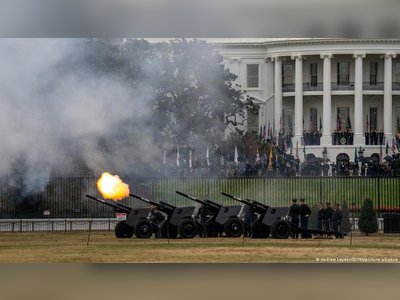Loss of Chinese buyers: final straw for Australia’s property market?
Australia’s property market, like many others around the world, has been hit by the coronavirus-induced economic downturn. But for its two largest cities, Sydney and Melbourne, Covid-19 is only part of the problem.
In these cities, a mix of stresses that include falling immigration, disparities in supply and demand and a decline in foreign investment due in part to tensions between Beijing and Canberra, are fuelling fears that the worst is yet to come.
For the past two decades, Australia has been experiencing a building boom. More than 700,000 apartments, flats or units have been built nationwide since 2001, according to the Australian Bureau of Statistics.
Until recently, demand has kept up with the increasing supply as Australians from the regions have flocked to the cities, alongside international students and other arrivals from abroad.
But this appears to be changing. More people are now moving in the opposite direction, leaving the capital cities for the regions, according to a report by the Regional Australia Institute last month. It is a trend that was gaining momentum even before the pandemic, but is now accelerating, according to the institute’s chief executive Liz Ritchie.
“Over the last few months, we’ve all had to change how we work, and this has allowed staff and employers to see that location is no longer a barrier for where we choose to work,” Ritchie said.
Cuts to immigration and international student intakes as a result of border restrictions have contributed to the fall in demand.
For the 2018/19 financial year, net overseas migration to Australia was 239,601, with more than 60 per cent of arrivals settling in either Melbourne (32.3 per cent) or Sydney (30.9 per cent).
But the coronavirus has decimated migration from overseas. Prime Minister Scott Morrison said recently he expected net overseas migration to drop a little more than 30 per cent in the 2019/20 financial year and a drop of 85 per cent, from 2018/19 levels, in the 2020/21 financial year. Property experts believe that will translate into a fall in housing demand of around 80,000 units.
Already, prices are falling. One in three apartments in Melbourne’s CBD sold for less than it was bought for in the first three months of this year, according to a new report by CoreLogic titled “Pain and Gain”. Of the 120 properties sold, 68.6 per cent were investor owned. The sales had a median decline of A$44,500 (US$31,000).
Losses were less severe in Greater Melbourne, where 15.5 per cent of apartments sold at a loss. In Sydney, the suburb of Burwood took the biggest hit, with 22.4 per cent of apartments sold at a loss.
The falls are most acute with apartments; just 2.7 per cent of houses in Melbourne and 5.5 per cent of houses in Sydney sold at a loss.
Economists from some of Australia’s largest banks are forecasting a 10 per cent fall in prices nationwide as a result of Covid-19.
ALL CHANGE
Tim Lawless, head of research at CoreLogic, said the pandemic and the resultant economic shutdown had completely changed the market.
“The most impactful restrictions on Australian real estate commenced between the 20th and 25th of March. These included the closure of borders, a shutdown of non-essential services, a ban on open real estate inspections and on-site auctions,” he said.
“By mid-May, on-site auctions were reinstated in most states and territories, and property inspections gradually opened up. But new housing demand is likely to see a continued decline as borders remain closed to overseas migration and unemployment rises.”
While markets found some relief in the lifting of restrictions, few foresee smooth sailing ahead, particularly for Melbourne, which has entered a new six-week lockdown due to a surge in infections.
“If the housing market’s performance through the previous lockdown is anything to go by, it’s highly likely that Melbourne property transaction activity will see a sharp drop over the next six weeks, with both a material decline in new listings as vendors lose confidence in testing the market, and a lower number of sales as buyers retreat to the sidelines,” said Lawless.
“Over the previous lockdown period, which was in place between late March and mid-May, housing market activity was significantly disrupted. [We] saw real property agent activity across Victoria slump by almost 70 per cent … The lockdown period also saw sales activity drop to the lowest level since the early 1990s.”
The most expensive parts of Sydney and Melbourne are leading the downswing, according to CoreLogic’s data. Upper-quartile values are down 1.7 per cent across the combined capital city index over the past three months, while lower-quartile values have fallen by only 0.3 per cent. Melbourne’s inner city and eastern suburbs and high-end markets in Sydney, such as North Sydney, the Inner West and the Northern Beaches, have seen the largest declines.
LOSS OF CHINESE INVESTMENT
The loss of Chinese investment in these markets will hit particularly hard. According to Chinese real estate portal Juwai, Chinese interest in the Australian housing market slumped by more than 65 per cent in May, amid coronavirus restrictions and the deterioration of the relationship between the two countries.
Georg Chmiel, executive chairman of Juwai, said foreign demand, especially from China, had always been a small but significant part of the Australian market.
“Foreign buyers are most important when it comes to new home purchases, so they are a lifeline for developers who are having trouble selling to the local market because of Covid-19,” he said. “They are also focused in certain suburbs, especially in the inner city and certain luxury areas.”
Chmiel added that while the market had so far proven quite resilient, further decline was still expected.
“While prices have been resilient, many reputable analysts expect them to fall from 5 per cent to 15 per cent, peak to trough,” he said. “Economic recovery will take time, and we may see further losses in employment before things turn around. Luckily, some of the reduction in immigration due to the travel restrictions is being made up for by purchases by Australians who have been living abroad.”
Australian banks have begun warning borrowers that those who are unable to meet their mortgage repayments should consider selling their properties in the coming months to avoid accruing interest.
With demand down and potentially more houses being put on the market, new housing projects have been put on hold. Last month, the Housing Industry Association (HIA) predicted that construction of new houses nationally would be down next year by around 50 per cent, but the chief economist of HIA, Tim Reardon, said that in response to recent policy developments, expectations had been revised.
“Measures to support residential building activity improve the outlook for the 2020/21 year, although it is still projected that [new housing] will drop by around 15 per cent compared to the 2019/20 year,” he said. “It will be in the latter quarters of the 2020/21 year when the biggest impact of the announced support measures are seen in [new housing].”
Reardon said the market was already slowing but Covid-19 had hit just as it was about to start picking up again and that the recovery of the market depended on further policy changes and immigration returning.
“The market has contracted by around 20 per cent over the past two years and we expected the bottom of this cooling cycle to occur in April 2020. Covid-19 hit the market just as it was about to gain momentum. We now expect the market to continue to cool, back to levels not seen for nearly a decade.
“In due course, other state and territory governments are expected to respond to the economic downturn with measures to boost residential building activity.
“If migration, students and tourism do not return soon, there will be a significant decline in the number of apartments being constructed on the east coast.”
















